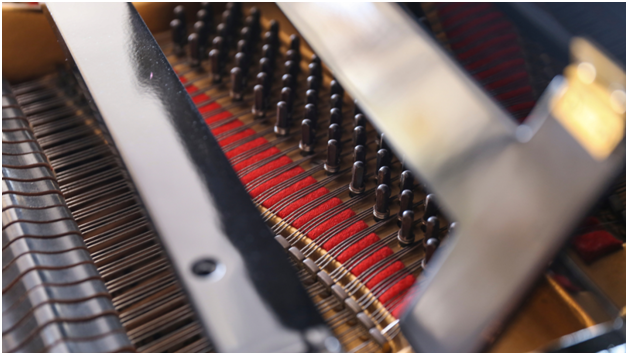Pianos are more than beautiful instruments—they’re delicate machines made of natural materials like wood, felt, and metal. While they may look solid and immovable, they’re surprisingly sensitive to their environment. Humidity, temperature changes, and seasonal shifts can all impact the internal structure and sound of a piano if proper care isn’t taken.
Whether you have a grand piano in your living room or an upright in your studio, keeping it safe from environmental damage is key to maintaining its value, tone, and longevity. Below are essential tips to protect your piano from humidity and temperature fluctuations.
1. Understand Why Humidity Matters
Humidity is one of the most important environmental factors for piano care. That’s because pianos are made primarily of wood, which expands and contracts based on the moisture in the air.
Too much humidity can cause:
- Swollen wood parts
- Sticky keys or sluggish action
- Rusty strings and pins
- Tuning instability
Too little humidity can lead to:
- Cracked soundboards
- Loose tuning pins
- Shrinkage in action parts
- Buzzing or rattling sounds
To keep your piano in optimal condition, it’s best to maintain a consistent relative humidity of 40%–50% year-round.
2. Use a Hygrometer to Monitor Your Space
The easiest way to track humidity levels is with a hygrometer. These inexpensive devices measure the moisture in the air and give you a clear picture of your piano’s environment.
Place a digital hygrometer near your piano, but not directly on top of it. Check it regularly, especially during seasonal transitions when indoor humidity can swing dramatically. If levels fall outside the 40–50% range, you’ll need to adjust your home environment accordingly.
3. Invest in a Humidity Control System
If your piano is in a space where humidity fluctuates wildly, it may be worth installing a dedicated humidity control system. There are two types to consider:
- Room Humidifiers/Dehumidifiers: These regulate the air in the entire room where your piano lives. They’re great if the space is large or if multiple instruments are stored there.
- Piano-Specific Climate Systems: These are installed directly inside the piano and provide localized control, keeping humidity levels stable without affecting the rest of the room.
Many piano professionals recommend systems like the Piano Life Saver, which can humidify and dehumidify the area inside the piano cabinet itself. These systems are especially helpful in climates with extreme seasonal changes.
4. Keep Your Piano Away from Heat and AC Vents
Pianos should never be placed near heating vents, radiators, fireplaces, or air conditioning units. These sources of dry, moving air can wreak havoc on your instrument by rapidly drying out the wood.
Direct sunlight can also cause damage. UV rays not only fade the finish, but the heat from sun exposure can dry out and warp delicate parts inside the piano.
Instead, position your piano in a part of the room that stays relatively stable in temperature and humidity, away from windows, exterior walls, and HVAC vents.
5. Avoid Storing a Piano in Basements or Garages
Basements and garages are notorious for poor climate control. Even if they feel cool or spacious, they usually experience more drastic changes in humidity and temperature than living spaces do.
These environments can cause serious long-term damage to your piano, such as rusted tuning pins, moldy hammers, cracked wood, and uneven key response. Always store and play your piano in a space designed for human comfort—it’ll benefit both the sound and lifespan of the instrument.
6. Regulate Indoor Temperatures
Beyond humidity, extreme temperature shifts can also hurt your piano. Try to maintain a consistent indoor temperature—ideally between 68°F and 72°F (20°C to 22°C).
Sudden temperature changes, such as turning the heat on full blast in winter or blasting cold air during the summer, cause the wood and glue joints inside your piano to expand and contract. Over time, this leads to structural weaknesses that affect performance and tone.
7. Schedule Regular Inspections and Maintenance
Even with the best care, environmental stress can slowly impact your piano. That’s why regular maintenance is essential. A trained piano technician can spot early signs of humidity damage and recommend adjustments to your environment or repairs to internal components.
Routine inspections—combined with tuning at least once or twice per year—will help prevent small environmental issues from becoming costly repairs.
If your piano has already suffered from environmental wear and tear, don’t worry—professional piano restoration can often bring it back to life. Restoration services can repair cracked soundboards, refinish damaged cases, and rebuild internal components affected by moisture or dryness.
Humidity and temperature may be invisible forces, but their impact on your piano is very real. By taking simple, proactive steps to stabilize your instrument’s environment, you can ensure that it plays beautifully for years to come.
From room humidifiers and climate control systems to regular maintenance and tuning, each action you take helps preserve the tone, value, and integrity of your piano. Treat it like the investment it is—and it will reward you with music for generations.




